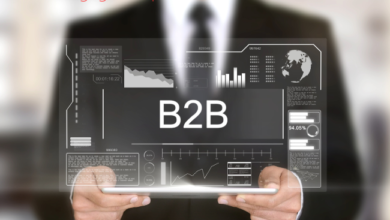An Ultimate Guide on Omnichannel Retailing

As the retail landscape continues to evolve, customers expect seamless experiences across all channels, and retailers need to keep up with the trend. This is where omnichannel retailing comes in. In this ultimate guide on omnichannel retailing, we’ll cover what it is, its benefits, how to implement it, and the difference between omnichannel and multichannel retailing.
What is Omnichannel Retailing?
Omnichannel retailing is a strategy that integrates all available channels, both online and offline, to provide customers with a seamless shopping experience. In other words, omnichannel retailing creates a cohesive and personalized experience across all channels.
To achieve this, retailers must comprehensively understand their customer’s preferences and behaviors across all channels. By doing so, retailers can tailor their omnichannel strategy to meet the needs of their customers and ensure a seamless and consistent experience across all touchpoints.
Omnichannel retailing encompasses all channels, including in-store, online, mobile, social media, and chatbots. With an omnichannel approach, customers can start their shopping journey on one track and continue on another without interruption or loss of information.
Benefits of Omnichannel Retailing
Implementing an omnichannel strategy can offer significant benefits to both customers and retailers, including:
Improved Customer Experience
An omnichannel strategy enables retailers to offer customers a seamless and personalized experience across all channels. This can include everything from customized recommendations based on past purchases to real-time inventory availability information, making the customer’s shopping experience more enjoyable and convenient.
With an omnichannel approach, customers can interact with a retailer through any channel and still receive a consistent and personalized experience. For example, a customer can browse a product online and pick it up in-store, or vice versa, without restarting their shopping journey.
Increased Sales and Revenue
An omnichannel strategy can increase sales and revenue by providing customers multiple touchpoints to interact with the retailer. Customers who engage with a retailer across various channels will likely spend more than those who only engage through a single channel.
Moreover, omnichannel strategies can help retailers capture more sales by reducing cart abandonment rates. This can be achieved by offering in-store pick-up, curbside, and same-day delivery.
Better Inventory Management
With an omnichannel strategy, retailers can manage their inventory across all channels. This enables them to fulfill orders from any channel and avoid stock-outs. It also allows retailers to optimize their inventory levels and reduce the risk of overstocking.
By having a centralized inventory management system, retailers can get a real-time view of their inventory across all channels, which can help them make informed decisions about product availability and pricing.
How to Implement Omnichannel Retailing
Implementing an omnichannel strategy requires a significant investment in technology, people, and processes. Here are the steps involved:
1. Understand Your Customers
The first step in implementing an omnichannel strategy is to understand your customers. This involves identifying their preferences, shopping habits, and the channels they use to interact with your brand. By doing so, you can tailor your omnichannel strategy to meet their needs and provide them with a seamless and personalized experience.
You can gather customer data through various methods, such as surveys, social media listening, and web analytics. By analyzing this data, you can gain insights into your customers’ behaviors and preferences, which can help inform your omnichannel strategy.
2. Invest in the Right Technology
An omnichannel strategy requires a robust technology infrastructure that seamlessly integrates all channels. This includes a comprehensive customer database, a centralized inventory management system, a responsive website, and a mobile app.
For example, a customer database can help you track customer behavior across all channels and provide a personalized experience. A centralized inventory management system can help you manage inventory levels and avoid stock-outs. A responsive website and mobile app can provide customers a seamless and consistent experience across all channels.
Investing in scalable technology that can adapt to changing customer needs and preferences is essential.
3. Integrate All Channels
To provide a seamless and personalized experience, retailers must integrate all channels. This involves creating a unified customer experience across all channels, including in-store, online, mobile, social media, and chatbots.
For example, a customer should be able to start their shopping journey on the website, add items to their cart, and then pick up their purchase in-store. Or a customer should be able to browse products on social media and purchase directly from the platform.
Integrating all channels requires a significant investment in technology, people, and processes. Retailers must ensure that all tracks are connected and can communicate with each other in real-time.
4. Train and Empower Staff
Omnichannel retailing requires a shift in mindset and culture. Retailers must ensure their Staff is trained and empowered to provide a seamless and personalized experience across all channels.
For example, a customer service representative should be able to access a customer’s purchase history and preferences across all channels to provide personalized recommendations. Staff should also be able to handle customer queries and complaints across all channels, including social media and chatbots.
5. Continuously Measure and Optimize
An omnichannel strategy requires continuous measurement and optimization. Retailers must monitor customer behavior across all channels and make data-driven decisions to optimize the customer experience.
For example, retailers can use web analytics to track customer behavior on the website and identify areas for improvement. They can also use customer feedback to identify pain points and improve the customer journey.
Difference between Omnichannel and Multichannel
Omnichannel and multichannel are often used interchangeably, but there are significant differences between the two approaches.
Multichannel retailing involves using multiple channels to interact with customers, such as a physical store, an online store, and a mobile app. However, each track is typically managed independently, with separate inventory management systems and customer databases.
On the other hand, omnichannel retailing involves integrating all channels to provide a seamless and personalized experience. All tracks are connected with a centralized inventory management system and a comprehensive customer database. Customers can start their shopping journey one way and continue it on another without interruption or loss of information.
In other words, omnichannel retailing is about creating a cohesive and personalized experience across all channels, while multichannel retailing is about offering multiple channels without necessarily integrating them.
Conclusion
Omnichannel retailing is becoming increasingly important in today’s retail landscape. It provides customers with a seamless and personalized experience across all channels while offering significant benefits to retailers, such as increased sales and better inventory management.
To implement an omnichannel strategy, retailers must invest in the right technology, integrate all channels, train and empower Staff, and continuously measure and optimize the customer experience. By doing so, they can create a competitive advantage and meet their customers’ evolving needs and preferences.
Overall, the key to successful omnichannel retailing is understanding your customers, integrating all channels, and providing a seamless and personalized experience at every touchpoint.
welcome to my site, I am Faisal I have 3 years of experience in guest posting. retund is a guest posting website!



